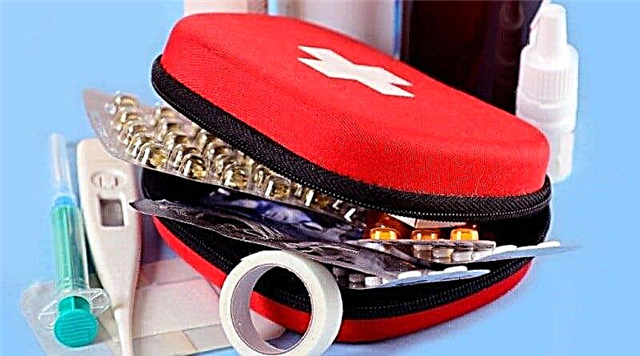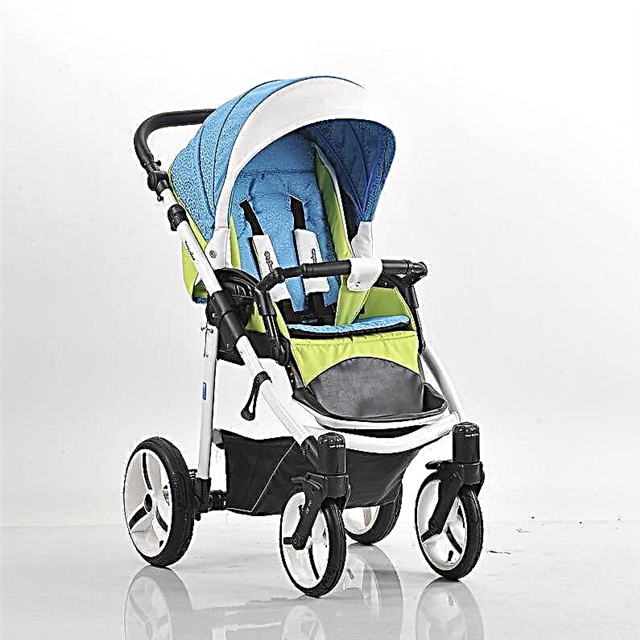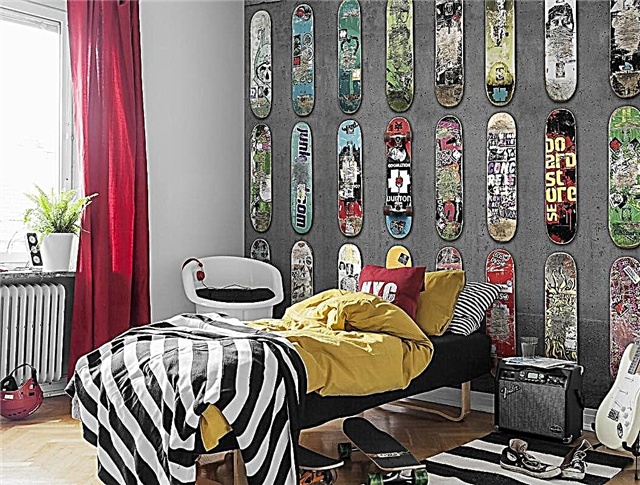
An adult spends up to 8-9 hours on sleep, and a baby much more - from 15 to 20 hours. For a young and growing body, not only the duration of sleep is important, but also its quality. Correctly selected size of the crib will help the child fall asleep quickly and will contribute to his physical development.

Standard
The very first piece of furniture for a child is a crib. Therefore, it is important to take into account the peculiarities of all types of children's furniture.
The following bed models are considered standard: a cradle bed, an extension model, a playpen, a transforming bed and a loft bed.


Cradle
The cradle bed has helped the ancestors to raise children since ancient times. The advantages of this crib lie in its compactness, ease of the motion sickness process, in the possibility of transferring from one room to another.e. But this furniture can be used only until the time when the baby begins to roll over and sit down, otherwise there is a possibility of his fall.
Previously, cradles were used for a longer time, but the baby was swaddled tightly. In fact, the baby was immobilized. This was done in order to help the young mother to have time to do some other chores around the house: to sew something, knit, cook.

Its size usually ranges from 40 cm in width to 90 cm in length. Height - from 50 to 90 cm.

Side bed
Side beds, in comparison with analogues, have their advantages.
The child is in a dream next to his mother, which facilitates the process of feeding, control over the sliding blanket. At the same time, it lies separately. Mom can sleep peacefully and not be afraid of hitting or crushing him. For a child, this model of a crib is the most psychologically comfortable: mom is always there.

As with the previous model, its use is short due to its size (up to two years if the size of the crib allows the baby to develop). The width of the side bed is from 55 to 60 cm, and the length is from 90 to 120 cm, the height of the model does not exceed 80 cm.

Most crib models are equipped with clamps that allow you to join the parent's bed. Depending on the level of the parent's bed, the crib can be raised or lowered from 30 to 50 cm from the floor level.


There are models in which the attachment of the side wall is provided, but then the baby's sleeping place will be reduced by 10 centimeters.
The board is used to wean the baby from sleeping with his parents and to teach him to a completely separate bed.

Playpen bed
The most popular model for newborns is a playpen bed, which, due to its size and parameters, can be used until the baby reaches the age of three. The parameters of this bed model are regulated by GOST.


It is designed not only for the baby to sleep comfortably, but also for his first steps. Along the perimeter of the crib, there are sides for which the baby can cling to turn over or stand up. The child can play independently, while it is good to see what his mother is doing. There is a distance between vertical barriers (up to 7.5 cm).
Depending on the activity of the child, the bottom of the bed may drop, so parents may not be afraid of the baby falling out of the crib. Most of the models have motion sickness mechanisms and are equipped with linen drawers.
If necessary, after removing one of the sides first, the crib can be added to the parent's bed. Having matured, the child will be able to independently crawl out of the crib.
Its size is most often 120 cm long and 70 cm wide.
Convertible bed
A transforming bed is a whole set of furniture, which directly includes a cot, a chest of drawers and linen boxes. As the child grows up, the chest of drawers can be used as an independent piece of furniture: a bedside table, a table, a cabinet.

This bed can be designed for an older child up to 10-12 years old. The length of the bed can be from 140 to 180 cm, and the width is usually 60 cm.

For children, it is preferable to purchase wooden beds (solid wood) rather than plywood or chipboard beds. This is especially true for children aged 5-12 years, which is associated with their increased activity.
Single
It is better for schoolchildren to purchase single bed models. In size, they may not be inferior to adult beds, but differ in the requirements for the quality of the materials used and design.

The standard size of a single bed is 100 cm wide x 190 cm long.

Bunk beds and loft beds
For families with two or more children, in order to save sleeping space, you can consider options for a bunk crib or loft bed. But the use of these pieces of furniture is possible only by children over the age of 7 years.
In order for a child who sleeps at a height to have enough air, the second tier should not be right up to the ceiling. The ladder used for ascending and descending and the overlap of the second tier bed must be safe and sound. A child who sleeps at a height can jump on the bed, get up, so it is important that all options for its inappropriate use are provided for in the model.

The loft bed is comfortable in that it saves game space. In such models, as a rule, a wardrobe, linen shelves are provided. Downstairs there can be a workspace in the form of a desk or a sofa.
This bed option will be interesting for teenagers. This is a version of a room in a room that teaches the child to intelligently organize his space, orients him to study. The child seems to be in his own world.

The size of bunk beds and loft beds varies, but for adult models it is usually the same size as a single model - 100 cm wide and 190 cm long.

Non-standard
Depending on the design, cribs for schoolchildren can be in the form of ships, car beds, tanks. But despite the original design solutions, it is necessary that the size of the child's bed correspond to the parameters approved by GOST, not narrow, take into account the age and activity of the child.
It is important that the child is comfortable and psychologically comfortable to sleep in such a bed.
When considering buying such models, you should take into account the time period during which the furniture will be used. A bright design can quickly bore a child, and the size of the bed will not take into account the growing needs of the child, including a physiological one.

In Western models of beds for teenagers, the emphasis is not so much on a bold design decision, but on the convenience of using the bed. The width of the berth for one child may not be 90 cm, but 100 or 120 cm.
Russian cribs are small in size, adapted for small children's rooms. It is better not to use such beds if space permits.
In these models, the child will feel uncomfortable and the quality of sleep will suffer. He will not be able to sleep, will be nervously agitated and crying.

Sizes by age
According to the requirements of GOST 19301.3-94, beds for preschool children living in the CIS countries can be of two types.
For children under 3 years old the width of the bed must be at least 60 cm, length - at least 120 cm, the height of the side rails - no more than 95 cm. The berth can be lowered to 30 cm from the floor level, rise to a height of 50 cm from the floor level.

The height of the side rails can be changed: either 81.5 cm from the floor level, or 95 cm. The side rails may not be moved at the request of the buyer.
For safety reasons, there is a distance between the posts of the side rails so that the child does not fall out or get stuck in a limb. It should be no more than 7.5 cm.

For children from 3 years old to 6-7 years old the width of the bed should not be less than 60 cm, the length - less than 140 cm. It is recommended to install the bed 30 cm higher from the floor level. The standards provide for the use of beds with a shorter length - 120 cm for preschool institutions.
In the countries of the European Union, different parameters of cots for newborns and children under 3 years old have been set. In France, the dimensions of the bed are identical to domestic requirements, the range of distance between the vertical side rails is set: from 4.5 to 6.5 cm. For cradles, the maximum guard height is 20 cm. Cots can be used from birth to 6 months. The sizes of the cradles range from 60 to 90 cm.
Italian, German, Scandinavian beds, as a rule, are 5-10 cm longer than Russian beds.

Russian standards provide parameters for rectangular beds. But there are a lot of interesting designer beds on the market now, which can be round, oval. For the safety of the child, models are recommended in which the above parameters are observed. The bed should not be narrower due to the shape more than the minimum requirements for its width.


For the beds of school-age children, domestic standards provided the following parameters:
- For primary school students (from 6-7 years old to 10-12 years old) the width of the crib is 80 cm, the length is less than 160 cm, the height of the berth from the floor level is 40 cm.The change in parameters is associated with the constant growth of the child, who should feel comfortable in the bed in all positions ...
- For middle and high school students the width of the bed should not be less than 90 cm, the length - less than 180 cm, the height of the bed - 50 cm from the floor level.
It is important to take into account that a child changes on average 3 beds from infancy to growing up. Children are constantly growing: in the first year of life, they can grow up to 40 cm, in subsequent years there is a slowdown in the growth process.
But it is recommended to choose the size of the bed taking into account its growth dynamics and individual developmental characteristics.

How to choose?
In the modern market for beds for children, there are a huge number of different models and designs for both newborns and teenagers. You should be extremely responsible when choosing a bed for a child, basing your choice on the following criteria: safety, comfort, design.
Safety... This criterion is especially important when choosing a crib for a newborn. During the first year, the child learns to roll over, crawl, walk.
The bed becomes not just a place to sleep, but also a small world for a newborn, where you need to touch, bite, lick everything.
The bed must take into account the growing needs of the child: have special bumpers, be stable, made of high-quality materials that are not so easy to break. The lines of the bed should be smooth. If this is a bed made of solid wood, veneer, then the coating should not emit an odor.
Cradle cannot be used after 6 months. Their parameters are not adapted for later use.

Physiology. The crib for babies should not be unbalanced, otherwise the baby will have a "stagnation" effect, which can lead to the fact that he becomes torticollis.
Regardless of the age of the child, it is necessary that the sleeping place be flat. For hyperactive and easily excitable children, get a model with high sides so that the child cannot fall during sleep.
It is better when the mattress of the bed is removable, it is easier to clean it of dirt, dust and dust mites.
Comfort. A crib is a special place where for the first time a child is left alone without his parents with his feelings and thoughts. It should be comfortable and sleep-friendly. It is important that nothing in it distracts from this physiological process: neither the color, nor the narrowness of the bed, nor the mattress, nor the otherworldly noise (creaking, tapping of details).
Many parents buy beds with bumpers on all four sides. As a result, the child lacks vision, he does not see the world around him.
When buying models of canopy beds that are popular among girls, remember that caring for them is laborious - they must be periodically washed, cleaned of dust.
Design. Children are very sensitive to the world around them. It is important that they are surrounded not only by functional pieces of furniture, but also beautiful ones.
It is better to choose a crib together with a child over three years old. So, he will learn to make his choice, he will be able to reveal his preferences. In the bed, which he chose himself, he will feel confident.


Size is of paramount importance when choosing a crib.
According to experts, a bed should always be bought with a significant margin, "for growth", both in width and in length. The child grows in a dream, he actively moves, turns over. It should not be allowed that he did not have room for rotation and growth.
For newborns, cribs that are 60 cm larger than the child's height are suitable.The cradles can be used only up to 6 months, since by the year the child's height can already reach 90 cm.In the future, you need to choose a crib at the rate of 10-15 cm a year and a period of which it is acquired.
It should be noted that newborn babies are not very fond of large beds. In the playpen, the baby will feel uncomfortable. Therefore, it is recommended to make rolls of the blanket to restrict its movement for up to four months. Thanks to them, the sleeping place will resemble a nest, in which the baby will be comfortable and safe.

Environmentally friendly materials from which the bed is made
Choosing a bed is not easy, interesting and important. All parents want their child to develop harmoniously not only from the position of the mind, but also physiology. A good crib helps keep your back healthy and your child's mental health.




